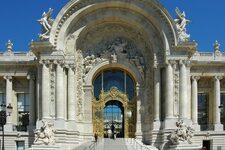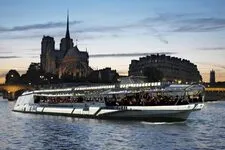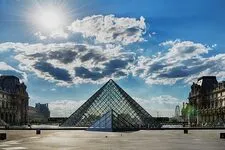Little Palace of Paris: everything you need to know

Located on Winston Churchill Avenue connecting the Champs-Elysées to the Esplanade des Invalides in the very chic 8th arrondissement of Paris, the Petit Palais, like its big brother the Grand Palais, was built in 1900 for the World Expo. Today used as a fine arts museum and designed in a trapezoidal layout, it consists of four buildings grouped around a garden luxuriously adorned with colonnades.
The beginnings of the Petit Palais
It was in 1894 that the destruction of the Palace of Industry was first mentioned to make way for the construction of two other palaces. Charles Giraud was appointed to oversee the work. He primarily wanted to preserve the greenery of the Marigny square to maintain the peaceful atmosphere of this exceptional place. Work began in the fall of 1897 and lasted two years. Raised on a large foundation, the first floor of the building, known as the "noble" floor, was arranged to accommodate future works. Two years after the World Expo, the Petit Palais was transformed into a museum and took the name "Palais des Beaux Arts de la Ville de Paris" to host a permanent art collection that spans the entire period from Antiquity to the end of the 19th century, as well as temporary exhibitions.
Between 1903 and 1925, significant work was undertaken to adorn the rooms with rich paintings and sculptures, aiming to give the Petit Palais the appearance of a true official palace. It was with this rich decoration that the architect sought to give the Petit Palais the splendor of a building entirely dedicated to the glory of Art and the city of Paris. The areas of the building whose decoration needed to be particularly cared for were thus designated. These mainly consisted of passage and circulation areas. The entrance vestibules, the garden colonnades, the two large exhibition galleries, and the staircase dome were then lavishly adorned with splendid paintings. In total, it took more than twenty years to complete this impressive decorative work.
Petit Palais will become grand
Numerous donations have continuously enriched the permanent exhibitions of the Petit Palais. In addition to these gifts, the museum's collection has expanded through the acquisition of many works by famous painters, including those of Gustave Courbet. These newcomers significantly contribute to the unwavering success of the place.
The 2000s saw the entry of contemporary photography into the exhibition halls of the Petit Palais, when it was decided to present, as an introduction to major international exhibitions, images from photographers inspired by the civilizations on display. Many of these photographs were subsequently acquired by the Petit Palais to enrich its permanent collection. Other major donors, including the Dutuit brothers (famous collectors and art historians), contributed to filling the Petit Palais's collection with works. Precious objects of ancient and medieval art, as well as fabulous pieces from the French and Italian Renaissance, gradually joined the famous Flemish and Dutch paintings in the museum. Paintings, sculptures, tapestries, and other art objects flooded the galleries. The museum even managed to acquire a set of 19th-century works through purchases made by the City of Paris, as well as bequests and donations of great interest (Cézanne, Courbet, Delacroix, Ingres, and many others will be part of it).
Closed from 2000 to 2005 for restoration and expansion work, the Petit Palais saw its exhibition space increase from 15,000m² to 22,000m²! The purpose of such a reorganization: the presentation of new large-scale international exhibitions on the first floor, throughout the western part of the building.
Also remember to book your tickets for the temporary exhibitions at the Petit Palais in advance.
Activities in the Surroundings

Petit Palais

Bateaux Mouches Dinner Cruise in Paris

The Orangerie Museum of Paris
